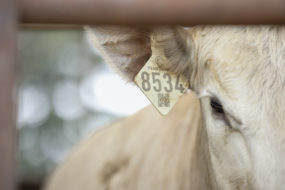In late October, Cagle's - a broiler integrator based in Georgia - filed Chapter 11 bankruptcy. Shortly thereafter, OK Foods - an Arkansas-based integrator - announced that it was being acquired by Industrias Bachoco, Mexico's largest poultry integrator.
Finally, last week Pilgrim's Pride released its third quarter earnings report and showed a loss in excess of $160 million, bringing total losses through the first three quarters of its fiscal year to over $400 million.
There are some signs of improvement for the broiler sector: cold storage stocks have been drawn down some, and exports have surged in the last couple of months. But price improvement has remained elusive. Last week's 12-city broiler composite price of just over 75 cents per pound is about the same as it was a month ago and is well below the high 70s/low 80s levels of this summer. The industry remains in contraction mode, with egg sets continuing to run more than 5 percent below year-ago levels as they have since about early summer.
Last week, USDA released the November World Agricultural Supply and Demand Estimates (WASDE) report, which includes updated meat production forecasts.
Not surprisingly given the discussion in the previous paragraph, that report calls for about a 2 percent drop in broiler production for next year. Also not surprisingly given this year's production challenges, this month's WASDE forecasts a decline of 5 percent in 2012 beef production. Despite the lower production, exports are expected to increase slightly. This means that the full decline in production, and then some, will come off of domestic consumption. Per capita consumption is projected to fall by 3.5 pounds to 54.1 pounds per capita.
In contrast to beef and broilers, pork production seems to have slowly returned to expansion mode. For 2012, pork production is forecast to increase by 2 percent over 2011. Exports are also expected to increase modestly, but the production increase is still projected to be sufficient to push per capita domestic consumption higher by 0.3 pounds per capita - to a per capita offtake of 46.2 pounds.
Thus pork, as the only major meat able to manage a production increase, is projected to take domestic market share from beef and broilers in the coming year. Given trends in production and exports over the past three to five years, we may not be far from the day when pork surpasses beef to be the number two meat in the US market. ![]()
John D. Anderson is a senior economist for the American Farm Bureau Federation.






